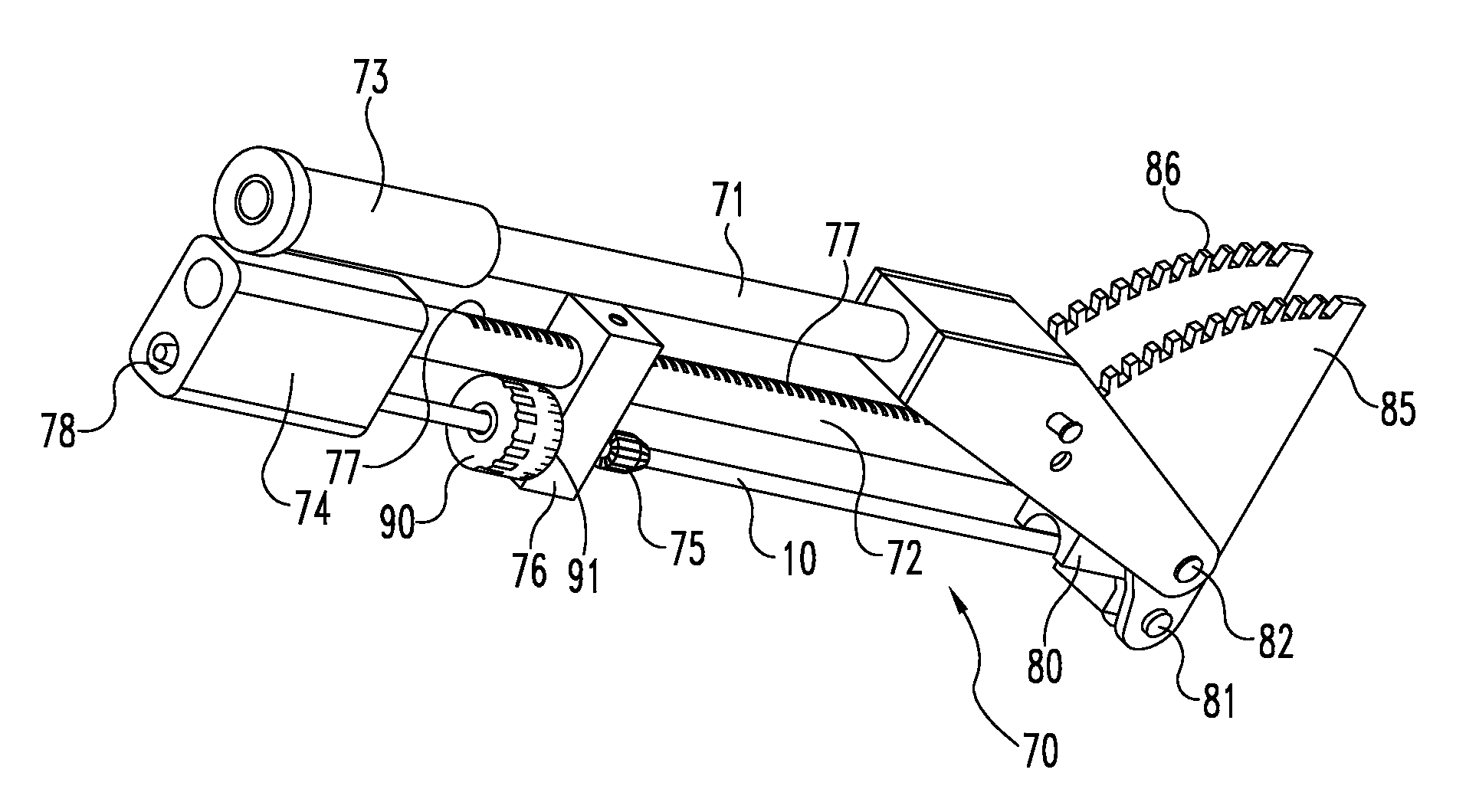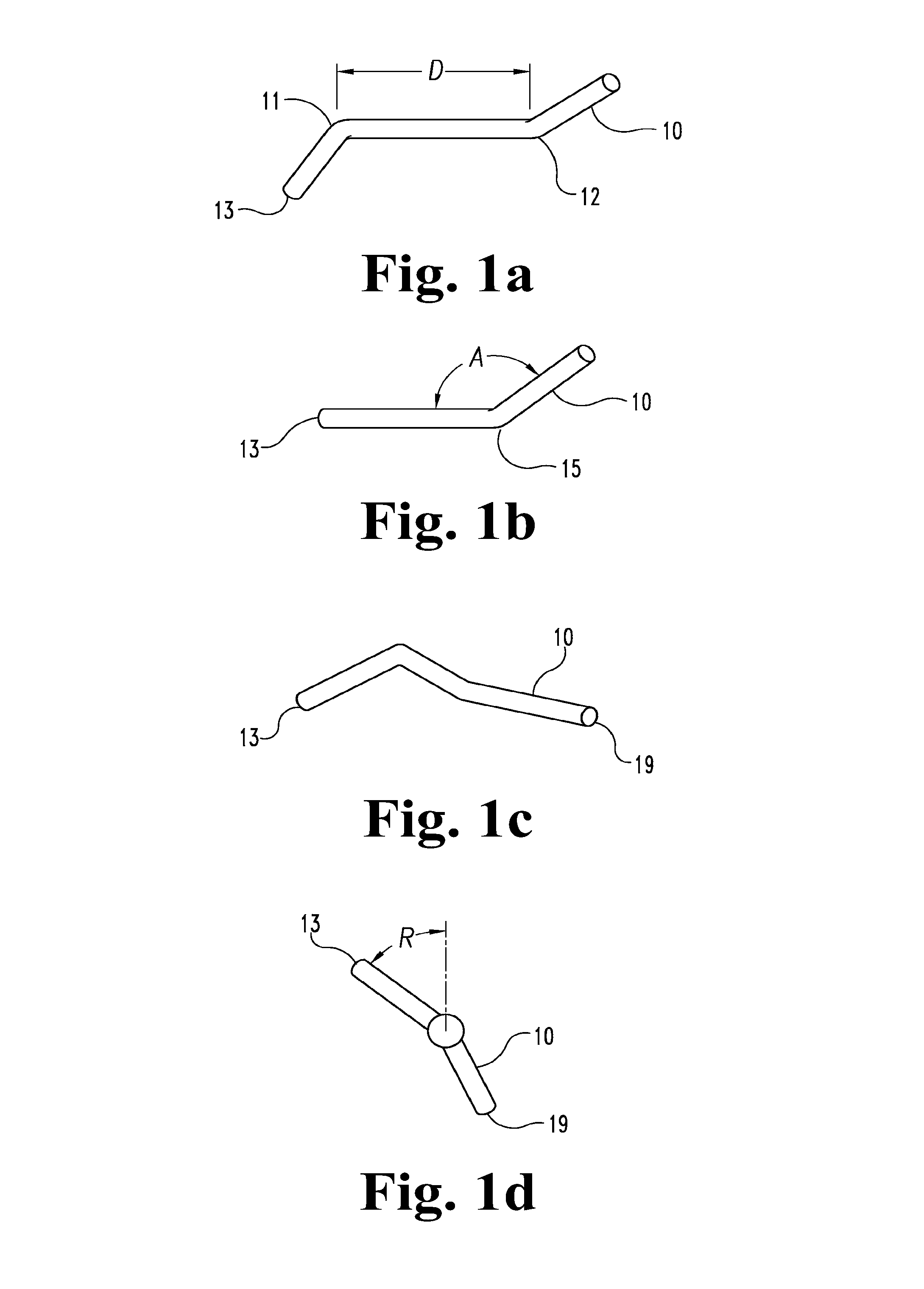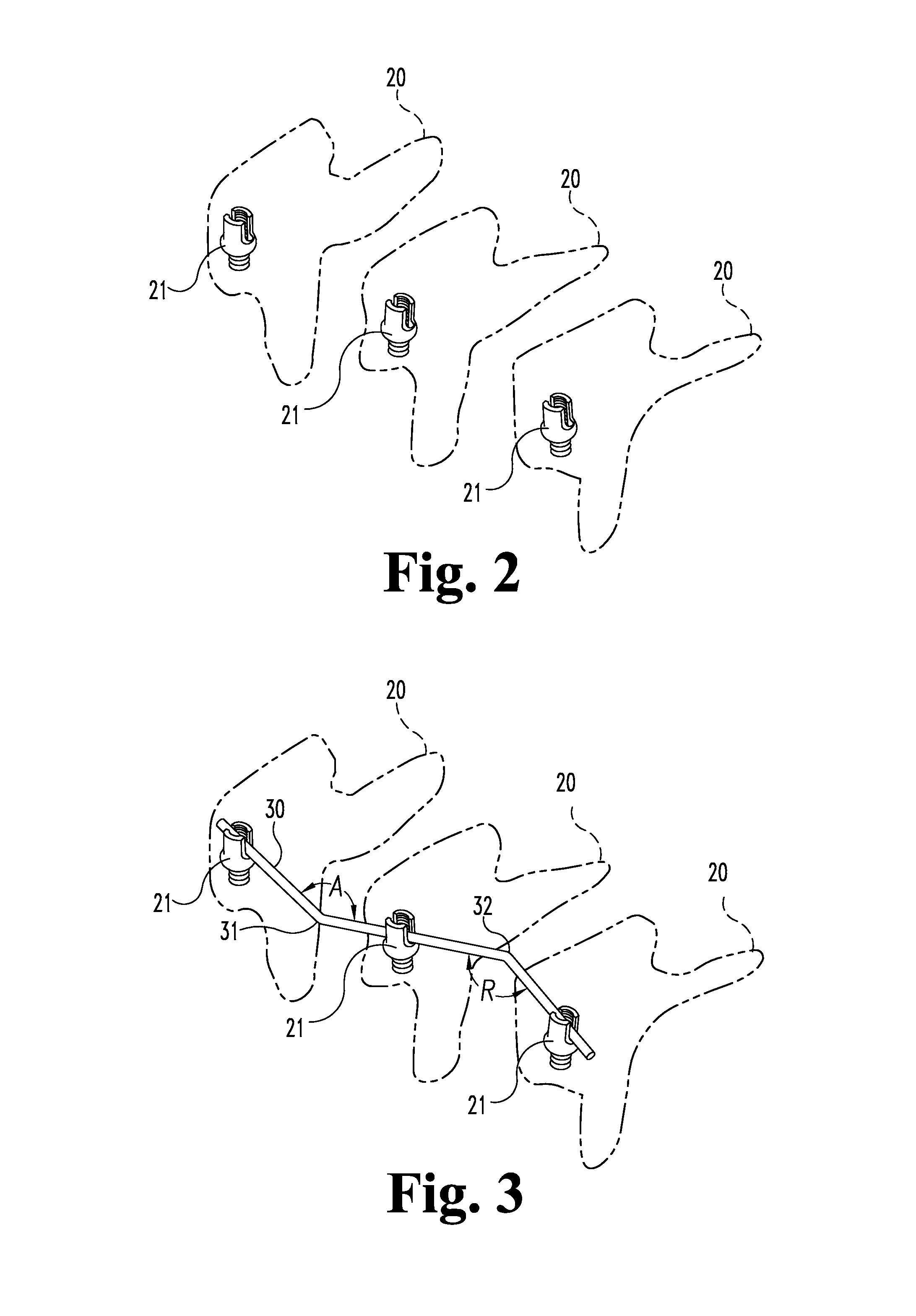System and device for designing and forming a surgical implant
a surgical implant and system technology, applied in the field of surgical implant design and formation, can solve the problems of increasing the risk of mechanical failure, difficult to design and implant linkage devices, and arbitrary determination of the location, angle and rotation of bends using such devices, so as to reduce the number of bend points
- Summary
- Abstract
- Description
- Claims
- Application Information
AI Technical Summary
Benefits of technology
Problems solved by technology
Method used
Image
Examples
Embodiment Construction
[0086]The present invention refers to a method for improving the shaping of a surgical linking device, for example, by bending. First, by digitally calculating appropriate shapes such as bends in 6 degrees of freedom (three dimensional) and then outputting that information to the surgeon or other medical personnel or to a bending device, a linking device can be easily and quickly shaped by casting, bending or the like. Second, a device is disclosed for quickly and easily taking the input from a digitally calculated means, or other similar means, and manually shaping a precisely bent or shaped linking device. Accordingly, the time spent in surgery bending linking devices can be greatly reduced thus improving the chances of a successful operation without complications as well as reduce the cost of such an operation, for example, from rebending or bending a second device. Since a significant portion of time is spent in bending and in some cases rebending such devices, taking minutes to...
PUM
| Property | Measurement | Unit |
|---|---|---|
| distance | aaaaa | aaaaa |
| bending angles | aaaaa | aaaaa |
| bend angle | aaaaa | aaaaa |
Abstract
Description
Claims
Application Information
 Login to View More
Login to View More - R&D
- Intellectual Property
- Life Sciences
- Materials
- Tech Scout
- Unparalleled Data Quality
- Higher Quality Content
- 60% Fewer Hallucinations
Browse by: Latest US Patents, China's latest patents, Technical Efficacy Thesaurus, Application Domain, Technology Topic, Popular Technical Reports.
© 2025 PatSnap. All rights reserved.Legal|Privacy policy|Modern Slavery Act Transparency Statement|Sitemap|About US| Contact US: help@patsnap.com



